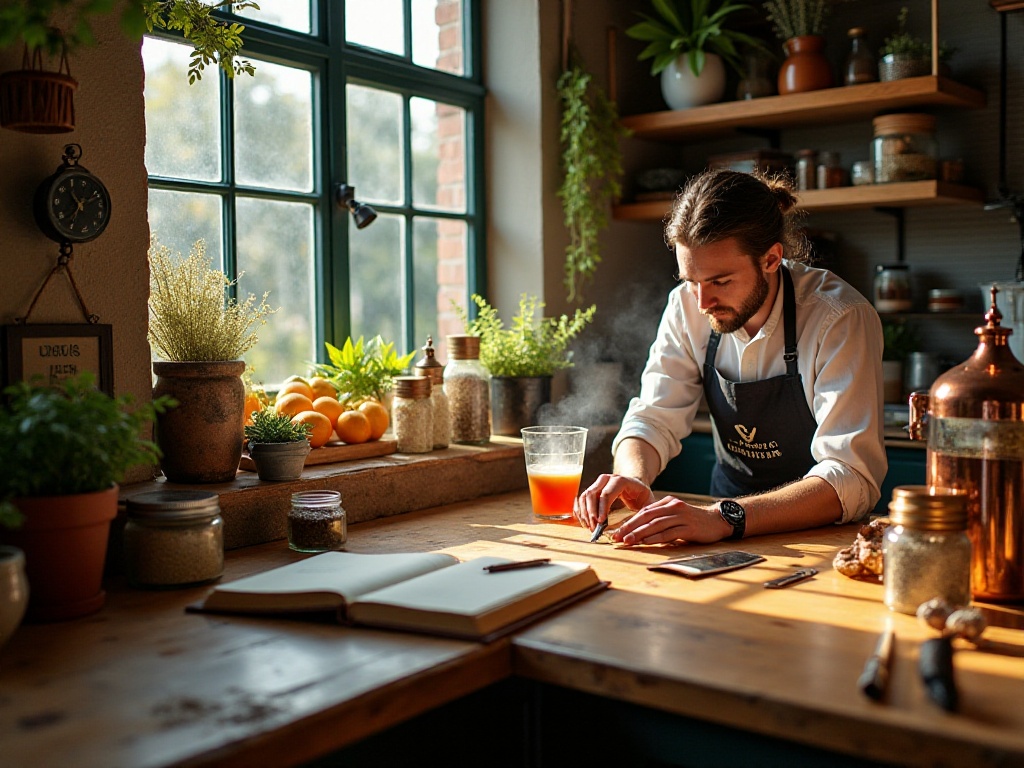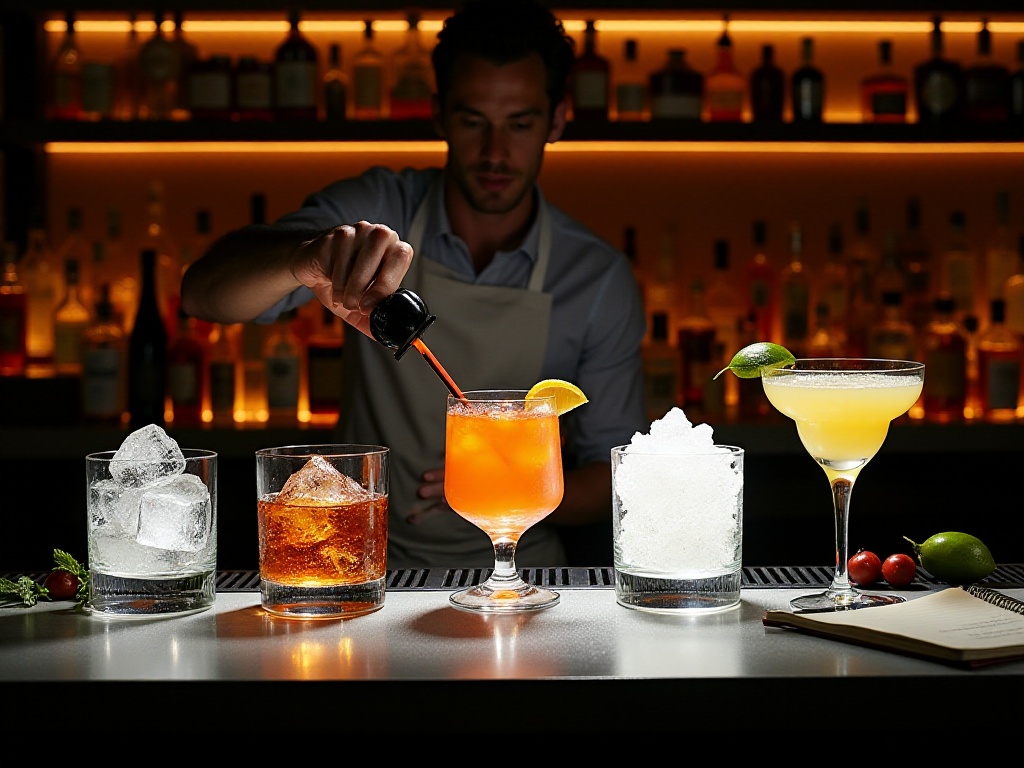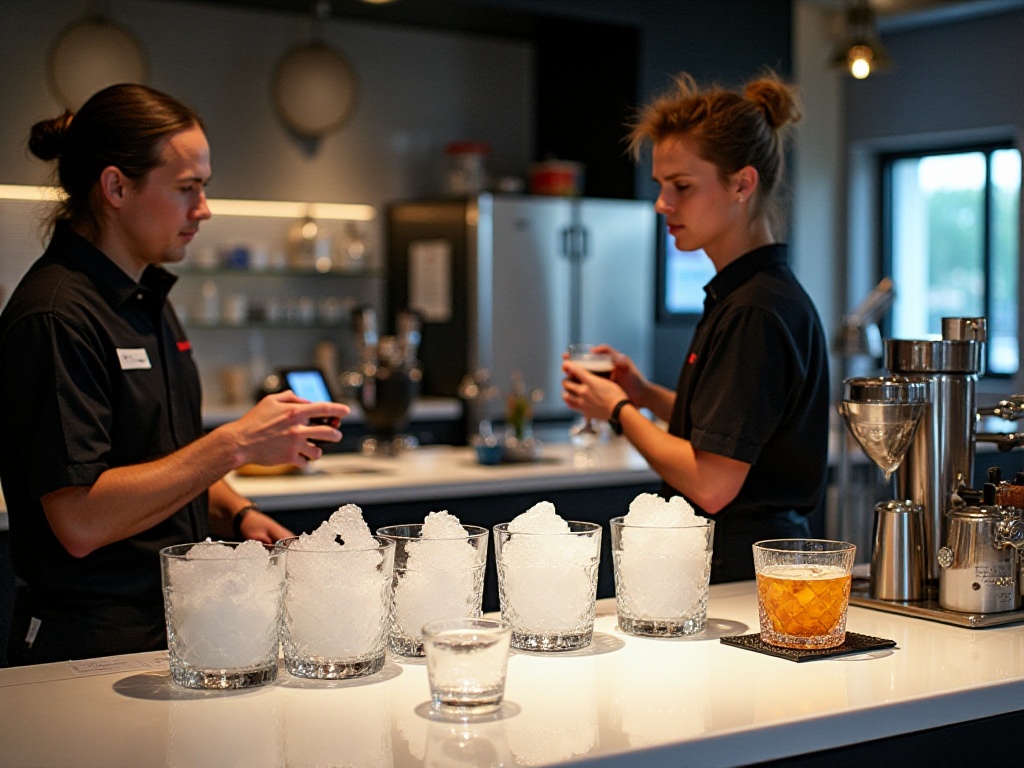
Market Insights
As a beverage development professional, I deeply understand the importance of market research. When I first started in this industry, I would carry a small notebook and walk around under the hot sun - it took me three whole months just to study competing products. I was really giving it my all back then, staying busy from 8 AM to 9 PM, visiting different beverage shops in rotation, taking photos, making records, taking notes, until even the shop staff recognized me.
I paid special attention to collecting genuine consumer feedback. Sometimes I would stake out store entrances to see which beverages were most popular; other times I would pose as a regular customer and chat with other consumers to understand their preferences. I remember once spending an entire day observing a trending tea shop just to figure out why their fruit tea was selling so well. From how they cut the fruit to the size of the ice cubes and the mixing sequence - I carefully recorded everything. I even observed the cups in the trash can to see how customers were consuming the drinks.
Through in-depth market research, I discovered many interesting phenomena. For instance, many young people don't actually buy beverages to quench their thirst, but rather for social sharing. They specifically buy "photogenic" drinks to post on social media. This explains why visually appealing beverages are particularly popular.
Did you know? From my observation, 90% of new product development failures are due to insufficient preliminary research. There was a recent typical case: a well-known brand spent a lot of money developing a brown sugar ginger tea soda. Their idea was to modernize a traditional healthy beverage - sounds creative, right? But what happened? Sales were dismal after launch. Why? Because they overlooked an important detail - young consumers' acceptance of sugary drinks is continuously declining. Data shows that in 2024, the market share of low-sugar and sugar-free beverages has already exceeded 45%, and this trend continues to rise.
This lesson teaches us that product development can't be done in isolation - it must stay close to the market and consumers. I often tell my team that it's better to spend an extra month on market research than to hastily launch an underdeveloped product. Because once a product receives poor market response, regaining consumer trust becomes difficult.
Positioning First
What's most crucial in beverage development? It's finding the right positioning. I often tell my team that rather than pursuing "uniqueness," it's better to pursue "precision." Many new brands want to do something novel right from the start, but often end up neither appealing to the masses nor having a specific target audience.
In my view, product positioning is like drawing boundaries for a beverage. Are you making high-end tea drinks or fast-moving consumer goods? Are you targeting office workers or students? Is the price point aimed at the mass market or premium niche? These questions must be clear before formula development begins.
Let me share a real case. Previously, we received a project to develop a functional beverage targeting urban young women. In preliminary research, we found that women aged 25-35 in professional roles were most concerned about two pain points: beauty care and sleep quality. Especially women working in big cities often experience poor skin condition and low sleep quality due to high work pressure and irregular schedules.
Based on this finding, we positioned our product in the collagen sleep aid beverage niche. For the formula design, we chose low-molecular-weight collagen, combined with sleep-promoting ingredients like melatonin and sour jujube kernel. The packaging design used a minimalist glass bottle with pink and purple colors to convey a gentle, healing feeling. The price point was set between 35-45 yuan, which wouldn't feel too expensive for the target consumer group while maintaining good profit margins.
After launch, this product quickly reached monthly sales of 500,000 bottles. The key to success was that we precisely identified our target group's needs and strictly executed every product aspect around this positioning.
Positioning must consider not only consumer needs but also the competitive environment. We carefully analyze the layout of existing products in the market to find demand points that haven't been fully met. For instance, upon finding that the high-end tea beverage market is already saturated, we wouldn't rashly enter this field but would instead look for other opportunities.

Customer Profiles
When it comes to customer analysis, you can't stay on the surface. Many people think knowing customers' age groups and income levels is enough - this understanding is far too superficial. To create a good product, you need to deeply understand your target customers' lifestyles, consumption habits, and even their pain points and anxieties.
Let me share our case of developing an energy drink for graduate school exam candidates. Instead of simply asking "what kind of energy drink do you need," we immersed ourselves in the daily lives of these students. We visited many study rooms to observe students' study patterns; we joined exam preparation groups to understand their daily routines; we even became friends with some students to hear about their struggles during exam preparation.
Through this investigation, we discovered an interesting phenomenon: graduate school exam candidates generally have a second study peak after 11 PM. During this time period, they particularly need energy drinks for support. However, traditional beverages with high caffeine content would affect their sleep quality, leading to poor mental state the next day. This created a dilemma.
Based on this insight, we developed a mild energy drink containing L-theanine. L-theanine not only provides gentle energizing effects but also helps stabilize mood without causing over-excitement. In the formula, we also added B vitamins and palatinose, which could supplement energy without affecting sleep.
For packaging, we chose a 200ml small bottle design for easy carrying and single serving. The price was set around 12 yuan, considering students' purchasing power. The packaging design used a clean blue tone to give a refreshing, energizing feeling.
After launch, this product received great feedback among the exam preparation community. Many students reported that this beverage helped them stay alert without affecting their rest - it became a perfect tool for exam preparation.
This case shows us that only by truly understanding customers' life scenarios and deep needs can we develop products that truly solve problems. While surface-level data analysis is important, deep scenario insights are key to success.

Process Control
In formula development, the selection of ingredients and process control are key factors determining product success. Many people think developing beverages is simply mixing materials in proportion - this thinking is too naive. In reality, every step needs precise control and repeated experiments.
Take the basic addition of sugar as an example. What type of sugar to choose - sucrose, fructose, or maltose? What proportion to add? What temperature is most suitable for adding? These seemingly simple questions all greatly affect the final taste.
I remember once when developing a fruit tea, we conducted hundreds of experiments just testing different sugar ratios. We finally discovered that adding sucrose at 65 degrees Celsius could best preserve the natural sweetness of fruits while not overpowering other flavors. This temperature point may seem arbitrary, but it was determined through repeated verification.
When developing low-sugar beverages, we use some special techniques. For example, adjusting acidity to enhance sweetness perception. Specifically, adding appropriate amounts of citric acid or malic acid. These acidic tastes not only balance sweetness but also make the taste more layered. This technique has been well applied in several sugar-free tea beverages I've developed.
The selection of ingredients is also an art. Take tea leaves for example - even with the same Longjing tea, leaves from different regions and picking seasons can produce vastly different tastes. We carefully select the most suitable ingredients based on different product positioning. For refreshing summer drinks, we choose pre-Qingming Longjing; for full-bodied teas, we choose leaves from around Guyu.
In fruit tea development, fruit processing methods are also crucial. The thickness of slices, firmness of fruit flesh, juice release speed - all need strict control. Through numerous experiments, we found that controlling fruit slice thickness to 3-4 millimeters is ideal, maintaining fruit texture while fully releasing flavors.
Particularly worth mentioning is that process standardization is also important. After developing a formula, how to ensure every store can produce the same taste? This requires detailed operation manuals and strict training systems. We specify every step down to seconds and grams to ensure product quality consistency.

Refined Management
Speaking of refined management, this might be an aspect many people easily overlook. But in my view, this is precisely the key to determining whether a product can succeed. From ingredient procurement and storage to production processes and final quality control standards, every link needs strict control.
Let me give you some specific examples. In fruit tea production, controlling fruit slice thickness might seem minor, but it actually greatly affects the final taste. Through repeated experiments, we found 3 millimeters is the ideal slice thickness. This thickness allows the fruit flesh to maintain appropriate firmness, preventing quick oxidation while allowing juice to slowly release, making the drink's taste more layered.
Ingredient storage temperature is also a key point. For example, fresh fruits need to be stored at 2-8 degrees Celsius, tea leaves must avoid light and moisture, and syrup storage temperature should maintain between 18-22 degrees. These temperature parameters are optimal values summarized through long-term practice.
We also have strict standards for mixing sequence. Take cheese foam tea for example - many people directly pour the cheese foam on top of the tea, which is convenient but results in less distinct layers. The correct method is to first fill the cup about 70% with tea, then gently lay the cheese foam on the tea surface using the back of a spoon to create beautiful layers.
Establishing quality control standards is also important. We set standards across multiple dimensions including color, aroma, taste, and appearance. For instance, fruit tea color must be bright and natural without oxidation discoloration; milk tea temperature must be above 85 degrees Celsius when served to ensure proper drinking temperature when customers receive it; sparkling water must maintain bubbles for over 15 minutes after opening.
In practice, we conduct regular surprise inspections of stores to ensure each location strictly follows these standards. Meanwhile, we've established a comprehensive training system, regularly organizing staff skill training and assessments to ensure they accurately understand and execute these standards.
Product pricing is also part of refined management. We precisely calculate each product's cost based on factors like raw materials, labor, and store rent, then reasonably set prices. We also adjust pricing strategies based on market feedback when appropriate.
Raw material procurement management is equally important. We establish strict supplier selection systems and regularly test raw material quality. For example, we regularly test tea leaves for pesticide residues to ensure food safety standards; for fruit suppliers, we inspect their growing bases and storage conditions on-site.
Now you understand why some brands can create hit beverages while others remain mediocre, right? It's these seemingly trivial details that ultimately determine product success. If you want to develop your own beverages, you must build a solid foundation with this basic work.
Over the years, I've seen too many entrepreneurs fail because they overlooked these details. They might have great ideas, but without a strict management system as support, it's ultimately difficult to grow and strengthen the business. Conversely, brands that can sustain development have all put great effort into these details.
Readers, what do you think is most important in beverage development? Welcome to share your views and experiences in the comments. If you're particularly interested in any aspect, let me know, and we can discuss it in detail next time.
Next
Building Your Healthy Lifestyle from Scratch: An Easy Wellness Guide for Lazy People
A comprehensive guide to healthy lifestyle practices covering nutrition management, exercise, and rest, along with detailed beverage manufacturing standards including formula development, raw material management, production processes, and quality control measures
The Ultimate Guide to Being Lazy in the Kitchen: How to Fit an Elephant in the Fridge
A comprehensive guide covering life efficiency enhancement and professional beverage making techniques, including home organization, kitchen optimization, scientific ice application, and essential elements of drink development
I Developed Hundreds of Trending Beverages - Here Are the Essential Preparations You Must Make
A comprehensive guide covering essential aspects of professional beverage making, including market research, recipe development, process control, and operations management to enhance product quality and operational efficiency
Next

Building Your Healthy Lifestyle from Scratch: An Easy Wellness Guide for Lazy People
A comprehensive guide to healthy lifestyle practices covering nutrition management, exercise, and rest, along with detailed beverage manufacturing standards including formula development, raw material management, production processes, and quality control measures

The Ultimate Guide to Being Lazy in the Kitchen: How to Fit an Elephant in the Fridge
A comprehensive guide covering life efficiency enhancement and professional beverage making techniques, including home organization, kitchen optimization, scientific ice application, and essential elements of drink development

I Developed Hundreds of Trending Beverages - Here Are the Essential Preparations You Must Make
A comprehensive guide covering essential aspects of professional beverage making, including market research, recipe development, process control, and operations management to enhance product quality and operational efficiency


